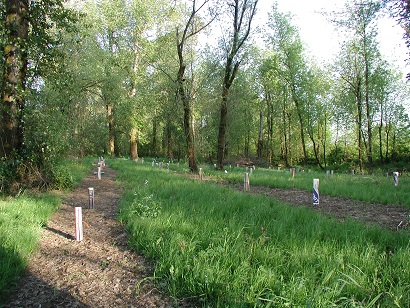Brad Withrow-Robinson, Forestry & Natural Resources Extension agent for Benton, Linn & Polk Counties
Among the many challenges facing landowners affected by the 2020 wildfires will be reforestation. One of the top issues will be tree seedling availability: Seedlings are in very short supply now, and it is likely to remain that way for several years.
The shortage is partly a demand issue. The wildfires affected about 350,000 acres of private forestland to varying degrees. That includes 70,000 acres owned by about 1,000 family forest landowners. This means about four million additional seedlings are now needed above the expected demand created by regularly planned harvest and reforestation. Everything that is already in the production pipeline has already been absorbed.
The shortage will also be a production issue. There are limits how quickly seedlings can be grown (typically 1-3 years) and most importantly, there are limits on capacity at every step in the production & planting process such as greenhouse space, nursery workers and cold storage. Clearly, a coordinated approach is needed to address this.
OSU Extension is working with the Oregon Department of Forestry, Oregon Small Woodlands Association, nursery producers and other partners to develop extra capacity needed to produce, deliver and plant seedlings in response to this problem.
Issues to be addressed include:
- Determining the need for seedlings (by area, elevation, species).
- Nursery production capacity which may be limited by both infrastructure and labor.
- Storage and distribution logistics.
- Planting labor force capacity
At this time, we are still trying to measure and map the need for seedlings. If you are a landowner affected by the 2020 wildfires needing to plant trees in the future(or know someone who is), we want to hear from you. Please follow this link https://beav.es/seedlings and fill in our seedling needs survey. This will put on you a mailing list and we will get back in touch with you with details as they develop.
If you need help with this, please contact the Linn County Extension office 541-967-3871 or email Laurie.Gibson@oregonstate.edu









